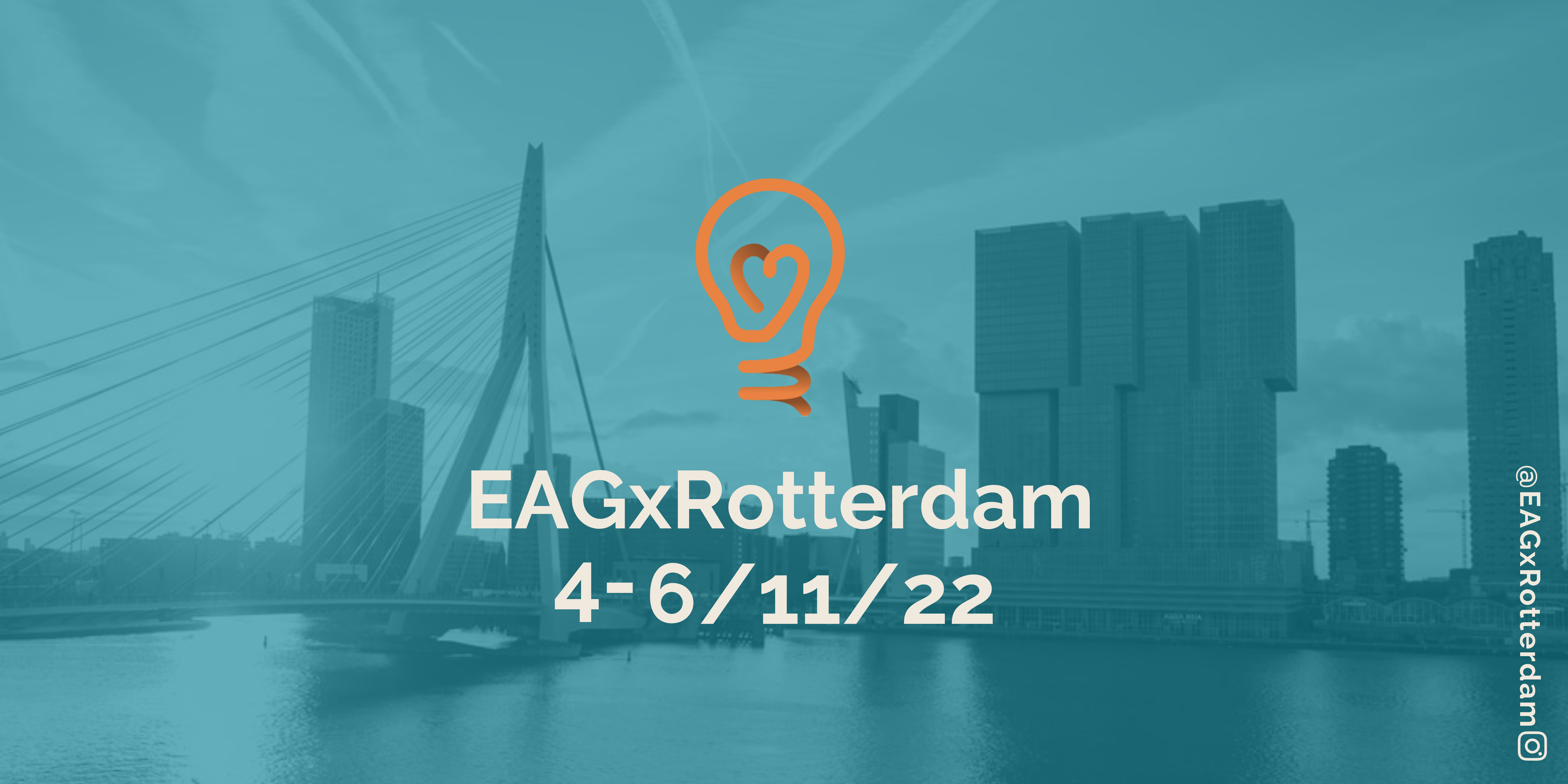
Applications for EAGxRotterdam just OPENED! Apply to join us in the Netherlands for a weekend of talks, workshops, plenty of time for networking, and other fun things, from November 4th till 6th.
EAGxRotterdam will bring together ambitious individuals in order to work on solving the world’s most pressing problems. This conference is an opportunity to create new connections and learn more about EA with topics suitable for everyone.
Who is this conference for?
Are you a critical thinker, do you enjoy debating, do you like meeting new people and do you want to do good?
Then EAGxRotterdam is the conference for you! It is for everyone who:
- Feels aligned with the core ideas of effective altruism
- Has actively engaged with the EA community
- Is eager to learn more about EA!
We encourage everyone described here to apply. If you’re unsure about whether to apply, err on the side of applying.
If you have any questions regarding applications or anything else related don’t hesitate to write to rotterdam@eaglobalx.org.
Don’t miss out on this opportunity and apply, see you in Rotterdam!
-The organising Team :)



Looking forward to welcoming everyone in Rotterdam!